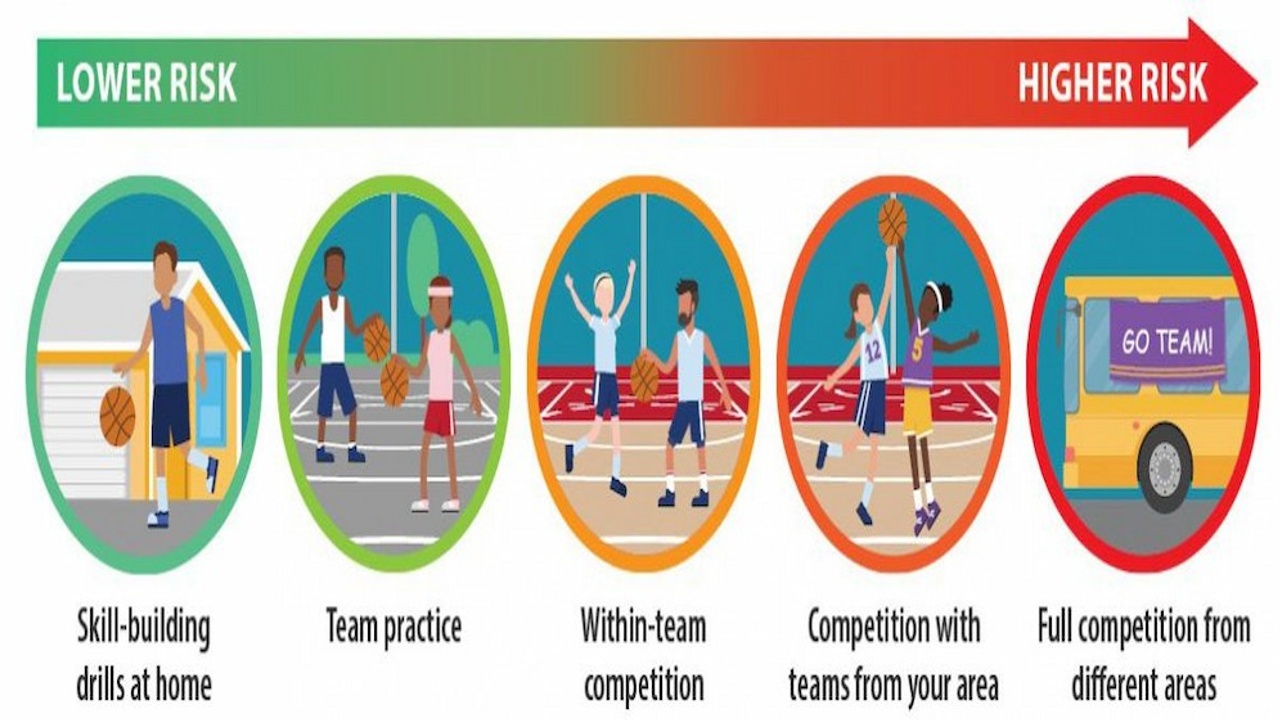Masks and ultimate - everything you need to know

Source: https://www.cdc.gov/coronavirus/2019-ncov/daily-life-coping/playing-sports.html
It’s April - again. The time of year many club players usually start to think more seriously about their goals for summer ultimate. Throughout the community, there are a lot of discussions about what a return to play might look like this year - we know it will probably be different than last year, but maybe not the same as 2019 either. Many players and organizers find ourselves in the position of asking this question: Can we play with masks on?

Graphic provided by Anna Kilbourn
Physiological effects of exercising with masks on
A mask can feel restrictive, which can change your perceptions of how hard you are working to breath and make you feel a little bit breathless. However, research shows the actual resistance imposed by masks is next to none! Studies say that wearing a mask during exercise is safe - and there has been no measurable decrease in performance for young and healthy adults.
Specifically, studies have found no statistically measurable differences in arterial blood gases, tissue level oxygenation of quadriceps muscles, rate of perceived exertion, or heart rate - even during “very heavy exercise”. Sometimes participants do report “dyspnea”, also described as “breathing discomfort” or “breathing effort”, which is attributed primarily to psychological factors. Generally, folks also tend to adapt to mask wearing over time, with decreased reports of discomfort.
Health Conditions that might complicated matters
Masks and exercise might not be appropriate for everyone. Asthma is a fairly common condition that is already exacerbated by exercise. Players with asthma, COPD, or any kind of respiratory disorders need to be extra careful and consult with your Doctor before exercising in a mask. Anxiety, claustrophobia, and autism can also make mask wearing during exercise intolerable.


Graphic provided by Anna Kilbourn
Safety Concerns
Even among high intensity exercise, ultimate is particularly challenging for the human body and we need to be aware of how masks might affect us when we play. The biggest safety concerns while playing in masks are 1) dehydration and 2) heat stroke or heat exhaustion.
Watch for signs of:
|
Dehydration |
Heat Exhaustion |
Heat Stroke |
|
Dizziness Lightheaded feeling Nausea Vomiting Cramps Dry mouth Lack of sweating Increased Heart Rate |
Weakness Nausea Vomiting Fainting Excessive Sweating |
Severe Headache Agitated or Confused Behavior Hot, red or dry skin Feeling cold/chills Rapid breathing Loss of consciousness |
These conditions are serious and can be reasons to call 911. Stop exercising. Drink water and make an effort to cool off quickly.
Consider the effects of adding a mask to the overall heat tolerance for your body. Build extra time into your practice or workout plan to take breaks, get in the shade, and spread out to drink fluids and have snacks. If possible, schedule high intensity activities around the weather on cooler days, or later in the day when the sun is not as high.
Correct mask usage
Choose a well-fitting mask for your face, with minimal room for air to escape, that is not going to fall down your nose every 2 minutes and need constant adjusting. Using an ear guard will make more sense for many athletes and will keep the mask snug and in place. Wearing a headband or sweatband will help keep the mask cleaner and dryer, making it less likely that you touch it. If you sweat a lot - you’re probably going to want more than one!
Keep your mask on to talk and huddle. Keep water bottles separated. Whenever you take your mask off or put it on, touch only the ear loops and use hand sanitizer afterward.

Source: https://www.communitymedical.org/CMC/media/coronavirus/Exposure-and-Masking-Infographic_English.pdf
Unanswered questions & study limitations:
Many studies coming out so far have relatively smaller study sample sizes, and none were found yet that included pediatrics (sorry youth coaches!). As far as I can tell, there were multiple genders present in some studies, but this is not clear in all of the research.
The main unanswered question is how effective masks will be at reducing transmission in sport situations, which require close contact and lots of heavy breathing. Though we of course expect them to help, it is unknown what the risks are during sport activities compared to wearing masks normally. Hopefully more data will be coming out soon to provide guidance.
Suggestions for moving forward
For the time being (but hopefully not too much longer), masks are here to stay. Be prepared for mask requirements, and don’t wait until tryouts start to exercise in your mask for the first time! Gradually increase your exercise intensity and length while wearing your mask to ease yourself into it, and take breaks or stop if you’re having difficulty. If you have a medical condition that might make it difficult, start talking to your doctor now about it. And when it comes time to get into vigorous exercise, make sure you're managing your water intake/electrolytes and body temperature appropriately.
For more information check out:
Shaw et all. Wearing of Cloth or Disposable Surgical Face Masks has no Effect on Vigorous Exercise Performance in Healthy Individuals Int. J. Environ. Res. Public Health 2020, 17(21), 8110
Hopkins et all. Facemasks and the Cardiorespiratory Response to Physical Activity in Health and Disease Ann Am Thorac Soc. 2020 Nov 16. doi: 10.1513/AnnalsATS.202008-990CME. Epub ahead of print. PMID: 33196294. (systematic review)

